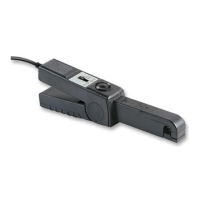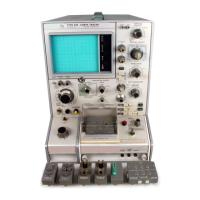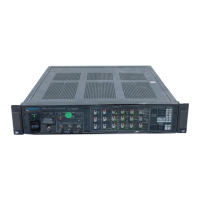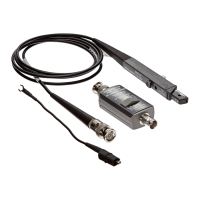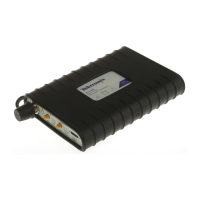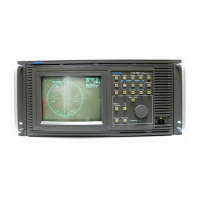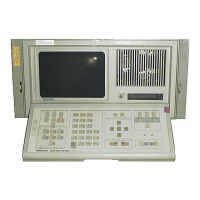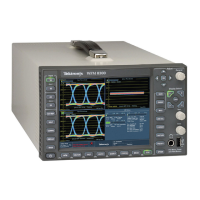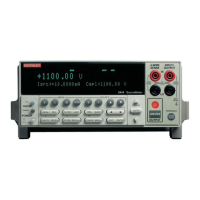Section
5-AA 501
MAINTENANCE
GENERAL MAINTENANCE INFORMATION
Static-Sensitive Components
9.
Use a soldering iron that is connected to earth
ground.
CAUTION
EX2
10. Use only special antistatic suction type or wicktype
Static discharge can damage any semiconductor
desoldering tools.
component in this instrument.
This instrument contains electrical components that
are susceptible to damage from static discharge. See
Table 5-1 for relative susceptibility of various classes of
semiconductors. Static voltages of 1
kV to 30 kV are
common in unprotected environments.
Observe the following precautions to avoid damage:
1. Minimize handling of static-sensitive components.
2.
Transport and store static-sensitive components or
assemblies in their original containers, on a metal rail, or
on conductive foam. Label any package that contains
static-sensitive assemblies or components.
Table
5-1
RELATIVE SUSCEPTIBILITY TO
STATIC DISCHARGE DAMAGE
MOS or CMOS microcircuits or discretes.
or linear microcircuits with MOS
inputs. (Most Sensitive)
Semiconductor Classes
Relative
Susceptibility
Levels'
schottky
TTL
14
ECL
Schottky signal diodes
2
3
3. Discharge the static voltage from your body by
High-f requency bipolar transistors
wearing a wrist strap while handling these components.
JFETS
Servicina static-sensitive assemblies or comDonents
5
6
should be performed only at a static-free work station by
Linear microcircuits
qualified service personnel.
Low-power Schottky TTL
a
Voltage equivalent for levels:
7
8
I
5. Keep the component leads shorted together
=
loo
500
=
500
7
=
400 to 1000 V (est.)
2
=
200 to 500 V 5
=
400 to 600 V 8
=
900 V
whenever possible.
3
=
250 V
6
=
600 to 800 V 9
=
1200 V
TTL (Least Sensitive)
(Voltage discharged from a 100 pFcapacitor through a resistance
6.
Pick up components by the body, never by the leads.
Of
100 ohms.)
9
7.
Do not slide the components over any surface.
Cleaning
4.
Nothing capable of generating or holding a static
charge should be allowed on the work station surface.
8.
Avoid handling components in areas that have a This instrument should be cleaned as often as
floor or work surface covering capable of generating a
operating conditions require. Loose dust accumulated on
static charge. the outside of the instrument can be removed with a soft
Scans
by
ARTEK
MEDLQ
*

